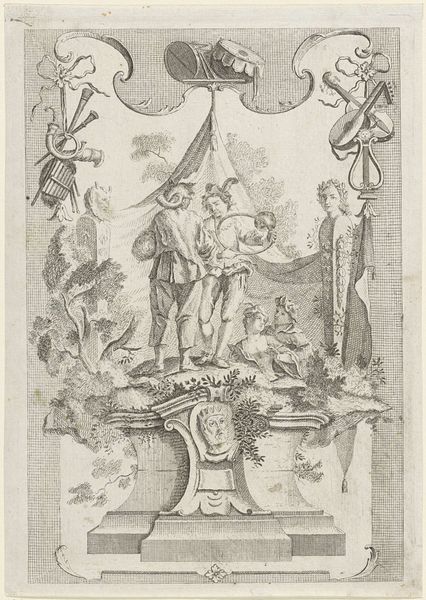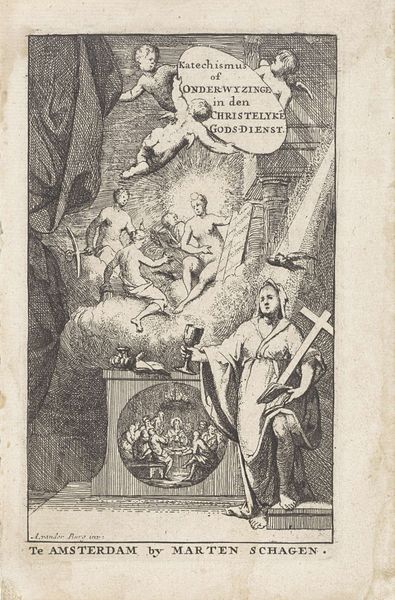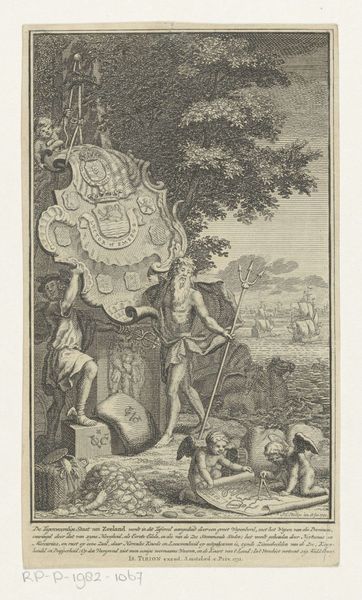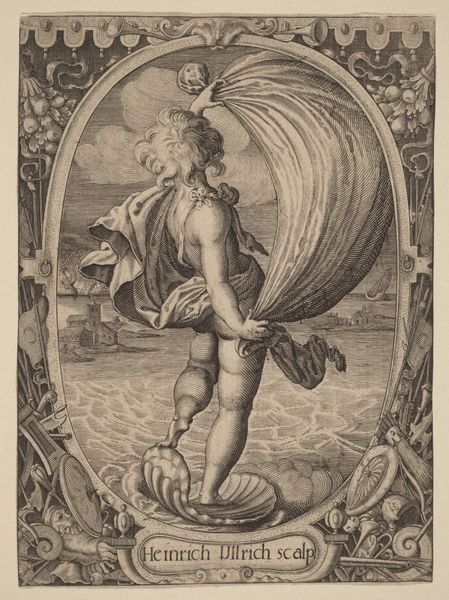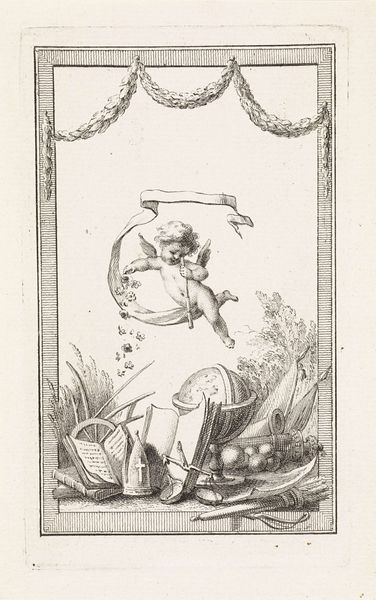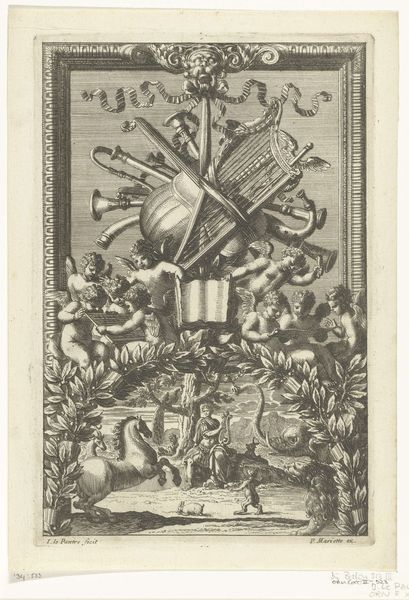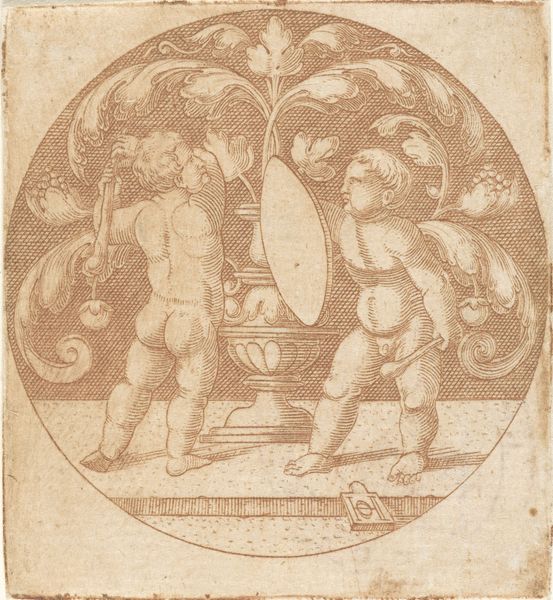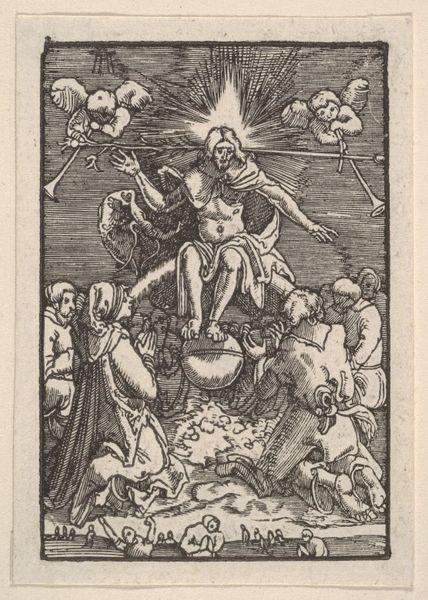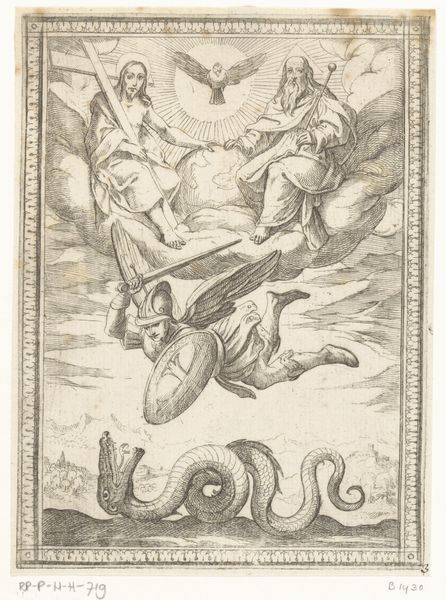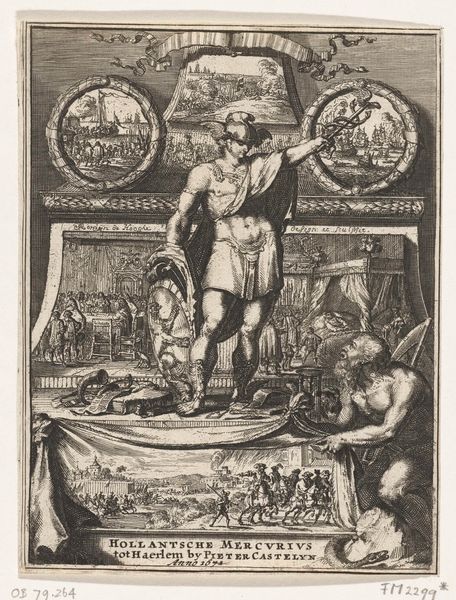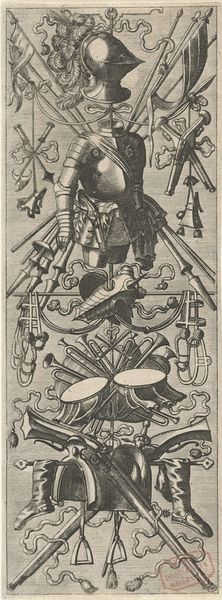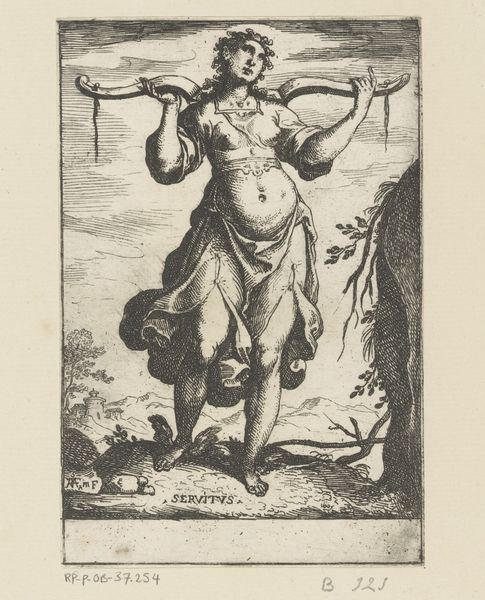
print, engraving
#
allegory
#
baroque
# print
#
old engraving style
#
figuration
#
unrealistic statue
#
engraving
#
intricate and detailed
Dimensions: height 207 mm, width 150 mm
Copyright: Rijks Museum: Open Domain
Curator: Let's turn our attention to this fascinating print, "Amor bestuurt de passer," or "Cupid Controls the Compass," crafted somewhere between 1635 and 1692 by Justus van den Nijpoort. Editor: My first thought? Intriguing, almost whimsical. The contrast of the delicate cherubic figures with the very precise, geometric tools is quite striking. There’s a tension, isn't there, between the ethereal and the empirical. Curator: Exactly! And that's no accident. In the context of the 17th century, the allegory plays on the relationship between love, represented by Cupid, and geometry, a symbol of reason and order. The print participates in a visual culture where such couplings weren't uncommon in moralizing emblem books of the period. It implies the guiding influence of love in directing all affairs, even rational ones. Editor: So Cupid, often associated with irrational passion, here masters the compass, a symbol of rational creation? It’s almost paradoxical. Visually, I am interested in the heart shape itself; though quite geometrical, it’s still quite rough around the edges, implying imperfect or even nascent feelings. What do you make of the torch present, and the figure holding it above the cherub with the compass? Curator: Yes, there's a compelling ambiguity. As for the figures, it is likely referring to the idea that passion needs tempering and a higher power to direct love's creative impulses. In the world outside this image, scientific pursuits like geometry were becoming increasingly valued and viewed as compatible, rather than conflicting, with spiritual and emotional life. This piece reflects that intellectual dance, though undoubtedly through the lens of societal power structures that championed such perspectives. Editor: Interesting. The baroque framing seems deliberate. Not just ornamentation, but perhaps signaling an almost overwhelming and ornate vision. It pulls at me with a sense of drama. I'll look at Baroque frames differently from now on! Curator: Indeed. The Baroque's penchant for elaborate symbolism certainly elevates the work from a simple image to a statement about love, intellect, and divine influence within the structured society of the time. We cannot neglect that the intricate details, all rendered through engraving, mirror the labor involved in mastering both geometric arts and matters of the heart. Editor: Well, my sense of whimsy has definitely been tempered by your insights! Curator: And hopefully, a bit of socio-historical context makes you reflect even deeper on seemingly simple symbolic objects!
Comments
No comments
Be the first to comment and join the conversation on the ultimate creative platform.
